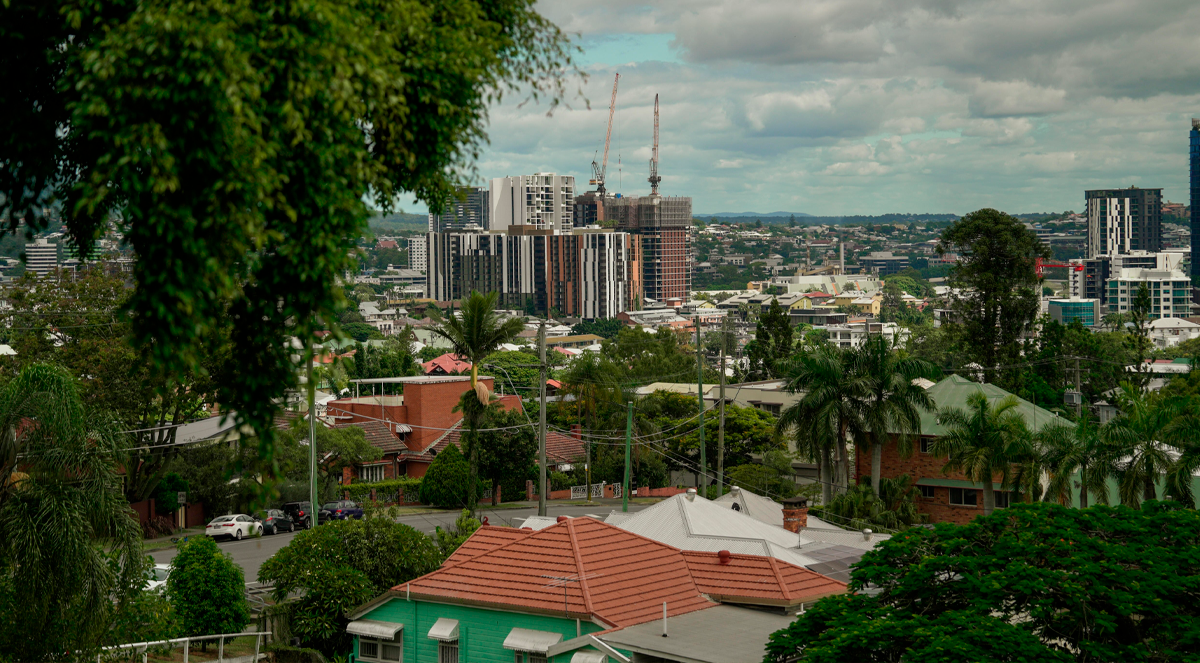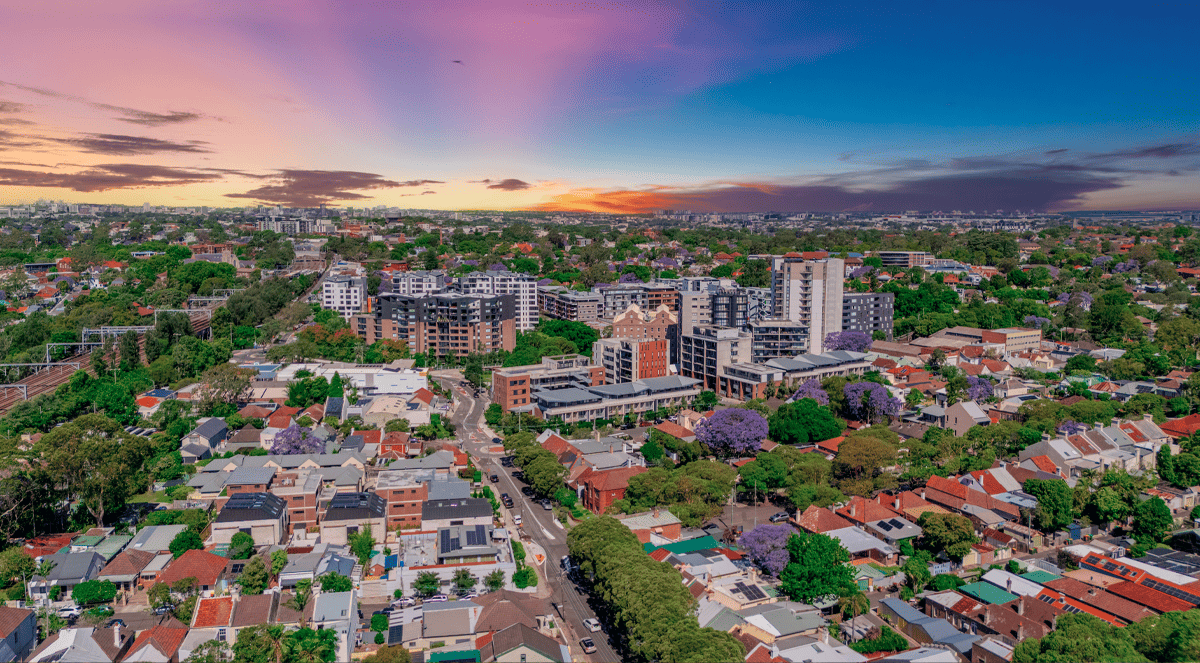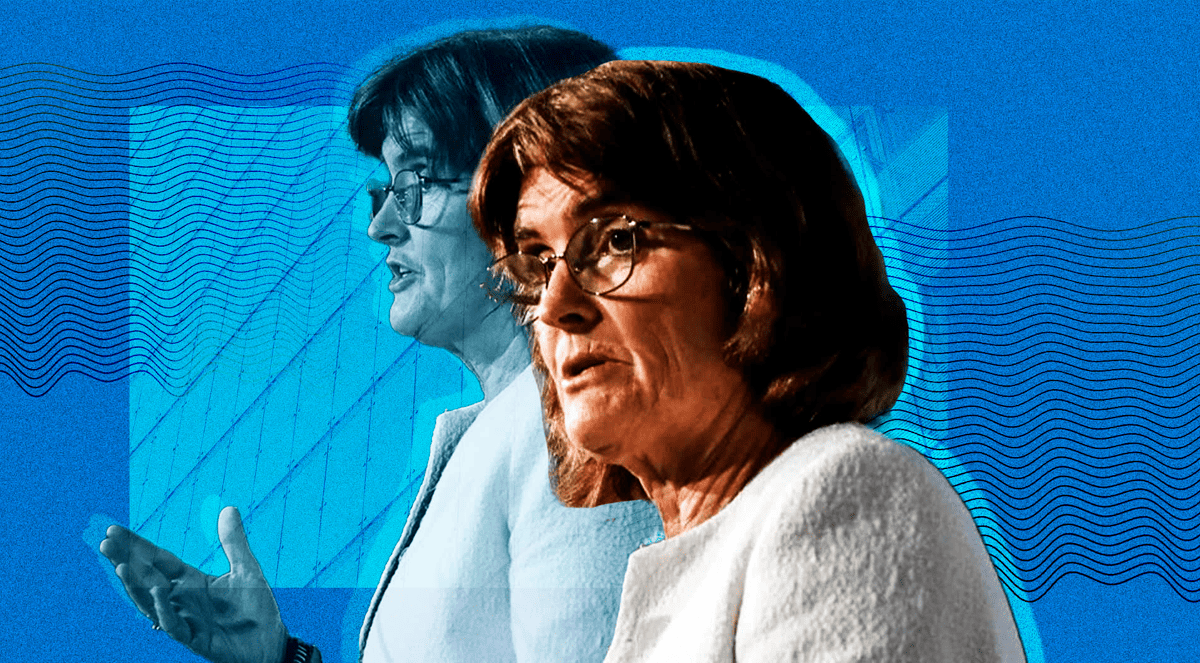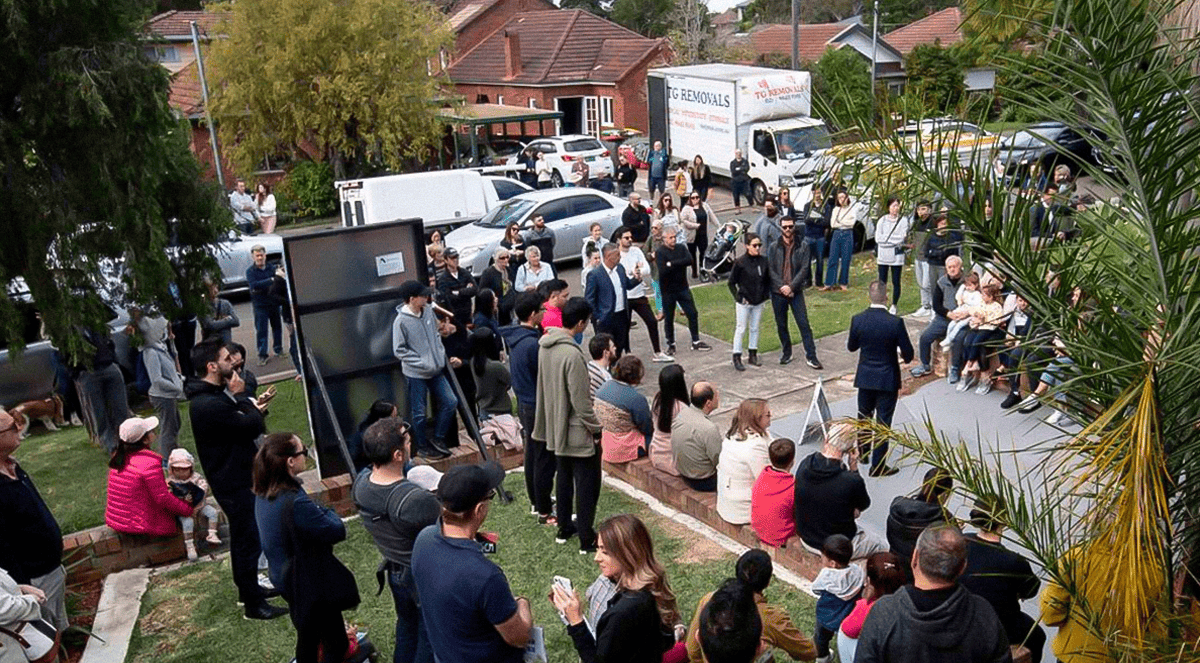Features > Property News & Insights > Market updates
Average Aussie home busts through $1 million barrier
.png)
KEY POINTS
- The Bureau of Statistics says the national average home value topped $1 million in the March 2025 quarter, driven by strong price growth in WA, SA, and Qld
- The total value of Australian residential real estate has reached $11.4 trillion, up nearly 60% in just five years
- However, analyst Cameron Kusher calls the $1 million milestone “a massive policy failure,” warning surging prices push homeownership out of reach
The value of the average Australian home has broken through the 1 million dollar barrier for the first time, according to new data from the country’s official statistician.
While the $1 million figure is a significant milestone, at least one housing analyst says he leans towards the view that expensive housing is a “massive policy failure”, rather than something to be celebrated.
The details
“The national mean price of residential dwellings passed $1 million for the first time in the March quarter 2025, rising 0.7% to $1,002,500,” according to Dr Mish Tan, the Head of Finance Statistics at the Australian Bureau of Statistics.
“Western Australia, South Australia and Queensland were the main drivers of the rise, with Queensland reaching the second-highest mean price in Australia, behind New South Wales.”
The ABS also says the total value of residential dwellings in Australia rose by $130.7 billion or 1.2% to $11.4 trillion in the March quarter of 2025.
When you divide that figure by the total number of homes in Australia - which the ABS estimates at 11,338,500 - the mean or average Australian home is now worth more than $1 million.
While economists prefer to consider property prices across a market in “median” terms, not as “averages” or “means”, one analyst says the fact the average home price has breached the $1 million mark is “big news, especially when you consider these are prices of all residential dwellings not just houses.”
Independent housing expert Cameron Kusher says, “Depending on your perspective, the average property eclipsing the $1 million is fantastic news or a massive policy failure.
“Despite owning a property, I lean more towards the latter,” he says.
Big price lift
While the average Australian home is worth over $1 million, in reality, it’s only in Australia’s most populous state - New South Wales - where the average dwelling price is currently above $1 million ($1.245 million).
However, Qld (average price $944,800) and Canberra ($941,300) are now getting close.
The graph above, from Cameron Kusher, based on ABS data, shows how much average prices have increased over the past five and ten years, fuelled by the Covid-19 property boom.
“Over the past five years, national average prices are +44.3% ($307,800 higher) with SA (+85.2%), Qld (+80%) and WA (+74.4%) seeing the greatest increases and Vic (+18.2%), NT (+24.5%) and ACT (+34.3%) recording the smallest increases,” Mr Kusher says.
“Extending the analysis out over the past decade, average prices nationally are +73.1% ($423,200 higher) and have more than doubled in Tas (+114.3%), SA (+108%) and Qld (+104.7%) while NT (+6.3%), WA (+51.3%) and Vic (+54.7%) have seen the smallest increases.”
So, what does this big lift in home values mean?
Well, with average home prices now eclipsing $1 million nationally, Cameron Kusher says it “highlights that in order to enter into a mortgage, the amount that has to be borrowed is significant.
“At the same time, people that have owned their property for a long period of time are likely to have significant equity in their property.
“With interest rate cuts and more up-to-date data showing home values rising once more, we can expect the value of dwellings to continue to climb,” he says.
Housing shortage
The ABS figures show there were 179,900 new dwellings in Australia over the year to the end of March 2025.
Cameron Kusher says this “is woefully short of the requisite number of new dwellings when we consider overall housing demand and the Housing Accord target.”
The National Housing Accord has the ambitious target of building 1.2 million new homes in Australia over the five-year period between 1st July 2024 and 30th June 2029.
To get to that target, homes would have to be constructed at an average rate of 240,000 homes per year.
Nevertheless, Mr Kusher says he expects “the delivery of new housing will increase from here as interest rates fall, but when you consider the average price of dwellings, there are plenty of people who desire a property but can’t afford them at their current prices.
“The fact that increasingly people can’t house themselves in this country at reasonable prices is, in my mind, a significant policy failure.
“This is further highlighted by how many new homes we’re currently delivering compared to the government’s own target,” he says.
The independent housing expert, who’s previously worked for REA Group, Cotality, PRD Real Estate and been a property developer, says he’s not holding his breath for any meaningful action by governments to address the serious housing shortfall in Australia, but he says the fact the average price of a home has eclipsed $1 million “should be a wake-up call for everyone.”
“While we all may feel more wealthy,” Cameron Kusher says, “for those of us with kids, we can see a situation whereby a lot of that wealth is going to have to be used to get our kids into their own homes over the coming decades.”
Stay Up to Date
with the Latest Australian Property News, Insights & Education.




.png?width=292&height=292&name=Copy%20Link%20(1).png)
 SIGN UP FOR FREE NEWSLETTER
SIGN UP FOR FREE NEWSLETTER





.jpg?width=1920&height=1080&name=Warning%2c%20You%20Might%20Be%20Facing%20Higher%20Taxes%20Soon%20(1).jpg)





.png?width=1920&height=1080&name=Rate%20Drops%20Signal%20BIGGEST%20Property%20Boom%20in%20DECADES%20(1).png)

.jpg?width=1920&height=1080&name=Labor%20vs%20Liberal%20These%20Housing%20Policies%20Could%20Change%20the%20Property%20Market%20Forever%20(1).jpg)
.jpg?width=1920&height=1080&name=QLD%20Slashes%20Stamp%20Duty%20Big%20News%20for%20Investors%20%26%20Home%20Buyers%20(1).jpg)
.jpg?width=1920&height=1080&name=Trump%20Just%20Slapped%20Tariffs%20%E2%80%93%20Here%E2%80%99s%20What%20It%20Means%20for%20Australia%20(1).jpg)
.jpg?width=1920&height=1080&name=Federal%20Budget%202025%20More%20Debt%2c%20No%20Housing%20%E2%80%93%20Here%E2%80%99s%20What%20You%20Need%20to%20Know%20(1).jpg)
.jpg?width=1920&height=1080&name=Australias%20Housing%20Crisis%20is%20about%20to%20get%20MUCH%20Worse%20(New%20Data%20Warns).jpg)
%20(1).jpg?width=1920&height=1080&name=Australias%20RENTAL%20CRISIS%20Hits%20ROCK%20BOTTOM!%20(2025%20Update)%20(1).jpg)
%20(1).png?width=1920&height=1080&name=Is%20Adelaide%20Still%20a%20Good%20Property%20Investment%20(2025%20UPDATE)%20(1).png)
.jpg?width=1920&height=1080&name=RBA%20Shocks%20with%20Rate%20Cuts!%20What%E2%80%99s%20Next%20for%20Property%20Investors%20(1).jpg)
%20(1).jpg?width=1920&height=1080&name=I%20Predict%20The%20Feb%20Rate%20Cut%20(My%20Price%20Growth%20Prediction)%20(1).jpg)
.png?width=1920&height=1080&name=Why%20Property%20Prices%20Will%20Rise%20in%202025%20Market%20Predictions%20(1).png)
.jpg?width=1920&height=1080&name=Why%20Investors%20Are%20Choosing%20Apartments%20Over%20Houses%202%20(1).jpg)
.jpg?width=1920&height=1080&name=Why%20Rate%20Cuts%20Will%20Trigger%20A%20Property%20Boom%20(1).jpg)
.jpg?width=1920&height=1080&name=Retire%20On%202Million%20With%20One%20Property%20(Using%20SMSF).jpg)
.jpg?width=1920&height=1080&name=4%20Reasons%20Why%20You%20Should%20Invest%20in%20Melbourne%20Now%20(1).jpg)
%20(1).jpg?width=1920&height=1080&name=Old%20Property%20vs%20New%20Property%20(Facts%20and%20Figures%20Revealed)%20(1).jpg)
%20(1).jpg?width=1920&height=1080&name=Will%20The%20New%20QLD%20Govt%20Create%20a%20Property%20Boom%20or%20Bust%20(My%20Prediction)%20(1).jpg)
%20Scott%20Kuru%20(1).jpg?width=1920&height=1080&name=Inflation%20Hits%20Three-Year%20Low%20(Will%20RBA%20Cut%20Rates%20Soon)%20Scott%20Kuru%20(1).jpg)
.jpg?width=1920&height=1080&name=How%20to%20Buy%20Investment%20Property%20Through%20SMSF_%20The%20Ultimate%20Guide%20(1).jpg)
.jpg?width=1920&height=1080&name=Victoria%20Slashes%20Stamp%20Duty%20Melbourne%20Set%20to%20Boom%20Scott%20Kuru%20(1).jpg)
.png?width=1571&height=861&name=Are%20Foreign%20Buyers%20Really%20Driving%20Up%20Australian%20Property%20Prices%20(1).png)
.jpg?width=1920&height=1080&name=The%20Single%20Factor%20That%20Predicts%20Property%20Growth%20Regions%20(1).jpg)
%20Scott%20Kuru%20(1).jpg?width=1920&height=1080&name=My%20Prediction%20On%20Rates%20%26%20Negative%20Gearing%20(Market%20Crash)%20Scott%20Kuru%20(1).jpg)

-1.png?width=1920&height=1080&name=Major%20Banks%20Cut%20Rates%20Will%20RBA%20Follow%20Suit%20(Sept%20Rate%20Update)-1.png)
%20Scott%20Kuru-1.png?width=1920&height=1080&name=Rate%20Cut%20Coming%20What%20New%20Zealands%20Move%20Means%20for%20Australia%20(Sept%20Prediction)%20Scott%20Kuru-1.png)
%20(1).jpg?width=1920&height=1080&name=Buy%20when%20the%20interest%20rates%20are%20high!%20(Why%20you%20must%20buy%20now!)%20(1).jpg)
.jpg?width=1920&height=1080&name=Carms_Revised%20Taxes%20Due%20Aug%209%20YT%20Thumbnail02%20(1).jpg)
.jpg?width=1920&height=1080&name=Carms_Too%20Little%20Too%20Late%20Aug%207%20YT%20Thumbnail01%20(1).jpg)









.jpg?width=1920&height=1080&name=Carms_Rate%20Drop%20In%20July%20Jun%2010%20YT%20Thumbnail02%20(1).jpg)
.jpg?width=1920&height=1080&name=Carms_Own%20a%20Property%20V6%20Jun%205_YT%20Thumbnail%20(1).jpg)









.png?width=1920&height=1080&name=Artboard%201%20(3).png)






.jpg?width=1920&height=1080&name=YT%20thumbnail%20%20(1).jpg)

